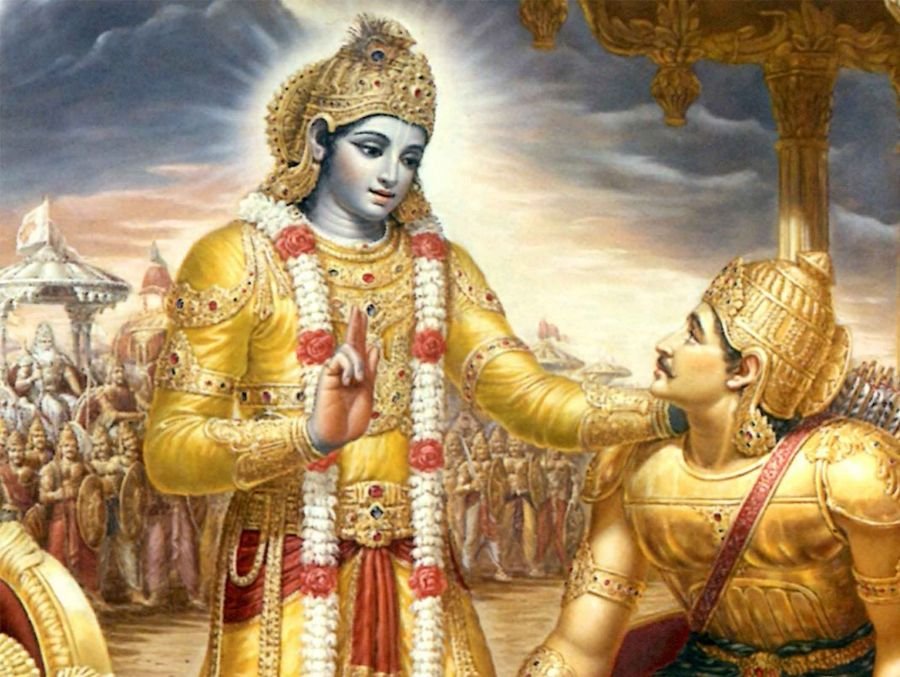(Image Courtesy Mahanidhiswami)
The Individual Soul Illumines The Entire Body With Consciousness Just As One Sun Illumines The Entire Solar System
यथा प्रकाशयत्येक: कृत्स्नं लोकमिमं रवि: |
क्षेत्रं क्षेत्री तथा कृत्स्नं प्रकाशयति भारत || 13.34||
yathā prakāśhayaty ekaḥ kṛitsnaṁ lokam imaṁ raviḥ
kṣhetraṁ kṣhetrī tathā kṛitsnaṁ prakāśhayati bhārata|| 13.34||
Shloka Translation
BG – Ch. 13- Ver. 34:
The supreme is attained by those who, through the eye of insight, sense the division between the field and its knower in this manner, and renunciation from the cause of all beings.
Explanation
Although the soul energizes the entire body in which it is cognizant, it is quite little in and of itself. “The soul is really small.” “We can calculate the size of the soul by dividing the tip of a hair into a hundred parts and then dividing each portion into another hundred parts.”
How can a soul that is tiny energise a body that is massive in comparison? Shree Krishna uses the sun as an illustration to convey this. The sun, despite being in one location, illuminates the entire solar system with its light.
Verse & what we can learn
The highest, which is moksha or emancipation from the cycle of Prakriti’s production and disintegration, is attained by the one who has erased his ignorance by knowledge. The key to comprehending this chapter is “viveka,” or discrimination, which was hinted at by the phrase “idam shareera,” or “this body,” at the opening of the chapter. Discrimination, or the ability to distinguish between the real and the unreal, is the “eye of wisdom” referenced in the shloka.
The person who knows how to live his life in such a way that he can distinguish between the unreal and the real, between the field and its knower, between Purusha and Prakriti, and learn to see the imperishable in the perishable as Ishvara, is freed from Prakriti’s mechanisms, the cause of all beings. The purpose of jnyaana yoga, as stated in the Gita’s thirteenth chapter, is to achieve this.
We can achieve this aim if we incorporate this message into our daily life through persistent thought and meditation.
To acquire knowledge and to implement that knowledge in life one needs to be mentally and physically active and healthy and for that daily meditation is a great tool.
There are various types of meditation like Buddhist meditation, heartfulness meditation, mindfulness meditation, meditation for stress, and each meditation benefits are countless. There is also numerous meditation techniques for beginners which help in practicing daily meditation so go ahead and start your journey towards a peaceful and balanced life.
In the next shloka Shri Krishna tells about body and the knower of the body.
Let’s learn to live with “The Gita” via Meditation Affinity…
